One of the reasons why I didn’t mind the idea of returning to Thailand, even though I had toured extensively through Southeast Asia during my previous long Tour, was that my results regarding the observation of examples of the region’s amazing birds could only be described as abysmal. At the time, I had only been committed to seeking out birds for around six months, so I was certainly a novice in that regard. That is not a valid excuse, however, when one considers the generally high species diversity in this part of the World, including many types that are not particularly difficult to see. Looking back, just after the earlier Tour was complete, in addition to inexperience, I rationalized my poor performance by considering that I had spent almost all of that Tour either in densely populated areas, or up on the generally bird-sparse Tibetan Plateau. With my pandemic-adjusted return to Thailand during this Tour, I expected to achieve a greater level of success by putting forth a more determined effort. Previously, while cycling from Singapore to South India, over a period of about six months, I recorded a mere forty-eight bird species that were new to me. Upon my return during the World2 Tour, I exceed that amount in only one week.
In this instance, I set off right away by routing my exit from Bangkok to the southwest, in a direction where the city abruptly gives way to the Chao Phraya delta, an area where many lowland and water-associated species are commonly found. Like most parts of the World, this region of Asia possesses many bird species that are commonly seen and generally present in great numbers. As I usually do, I ticked off a number of those in short order, with the first bird of the country this time being the omnipresent Great Myna, followed up quickly with Streak-Eared Bulbul, White-Throated Bulbul, Ashy Woodswallow, Asian Pied Starling, and Malaysian Pied-Fantail. What I cannot explain, is how I could possibly have missed seeing these species previously, especially considering their general abundance, and the fact that I had traveled through essentially the same area before. Nevertheless, they were all new species for me, so I won’t complain.
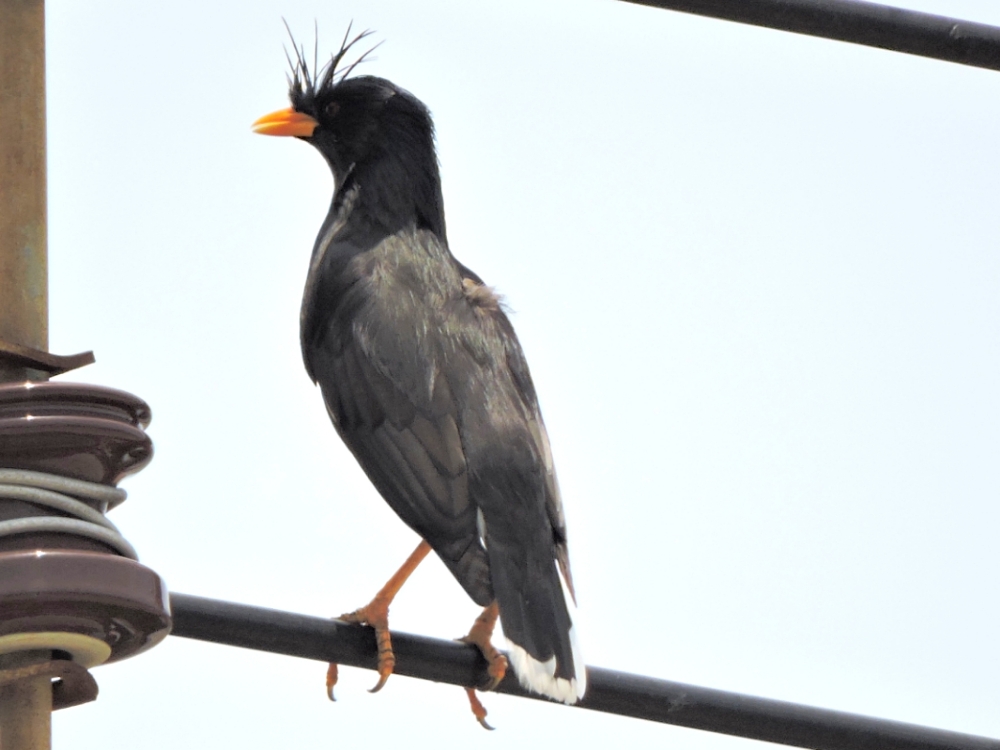
Next I made my way to an eBird Hotspot that is labeled Duck and Ibis Lake.
At that time of year there were unlikely to be neither ducks, nor ibises that I had not already seen there, but there should have been two nice birds for me to observe. First, however, I was surprised to find two new shorebirds there, including Pacific Golden Plover…
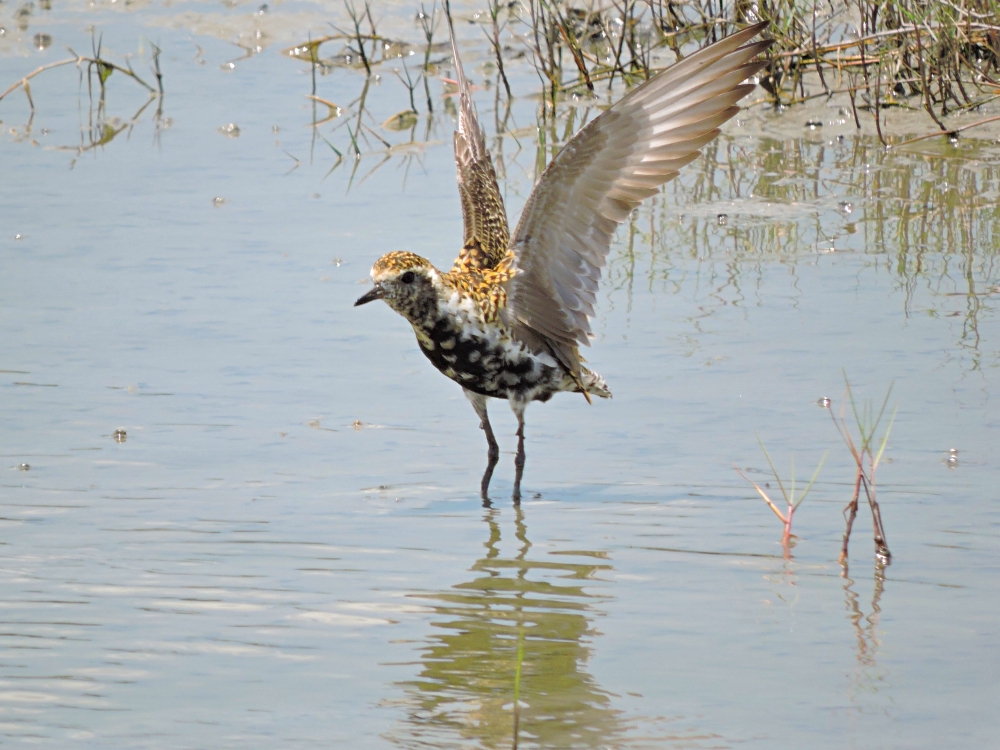
…and Spotted Redshank, a bird I had futility scanned numerous flocks for when I was in Europe.
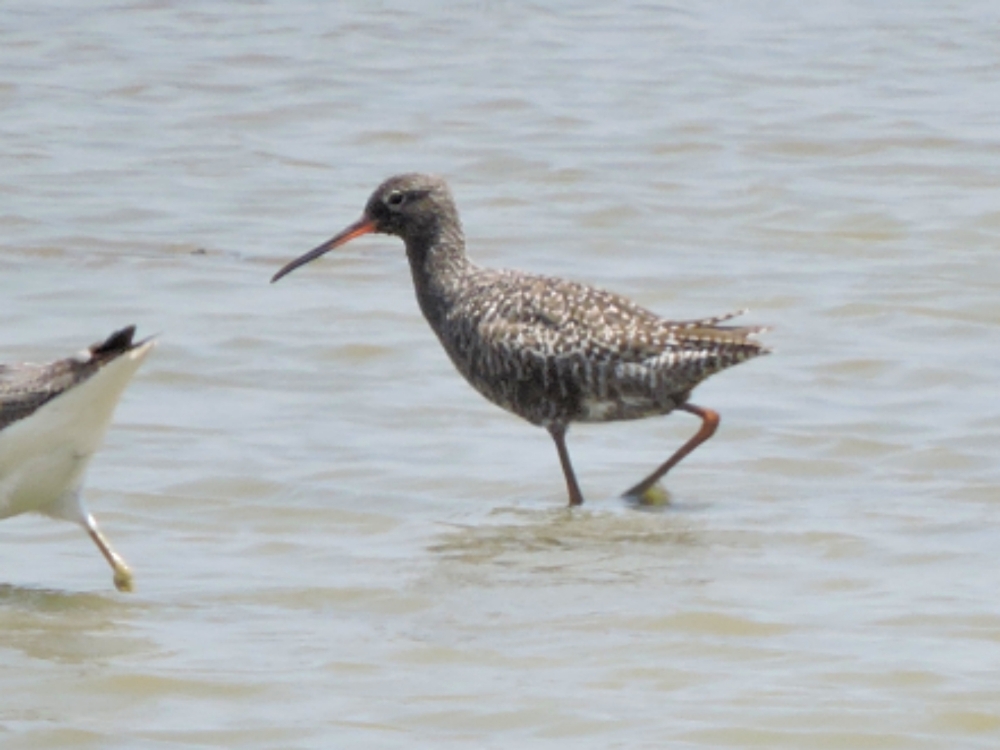
Only one week earlier, an eBird checklist had reported my two targets there in very good numbers, but I had to work a little harder for my sightings, perhaps because I arrived one hour later in the day than the previous observer had. But the birds were indeed seen, the first of which was Painted Stork.
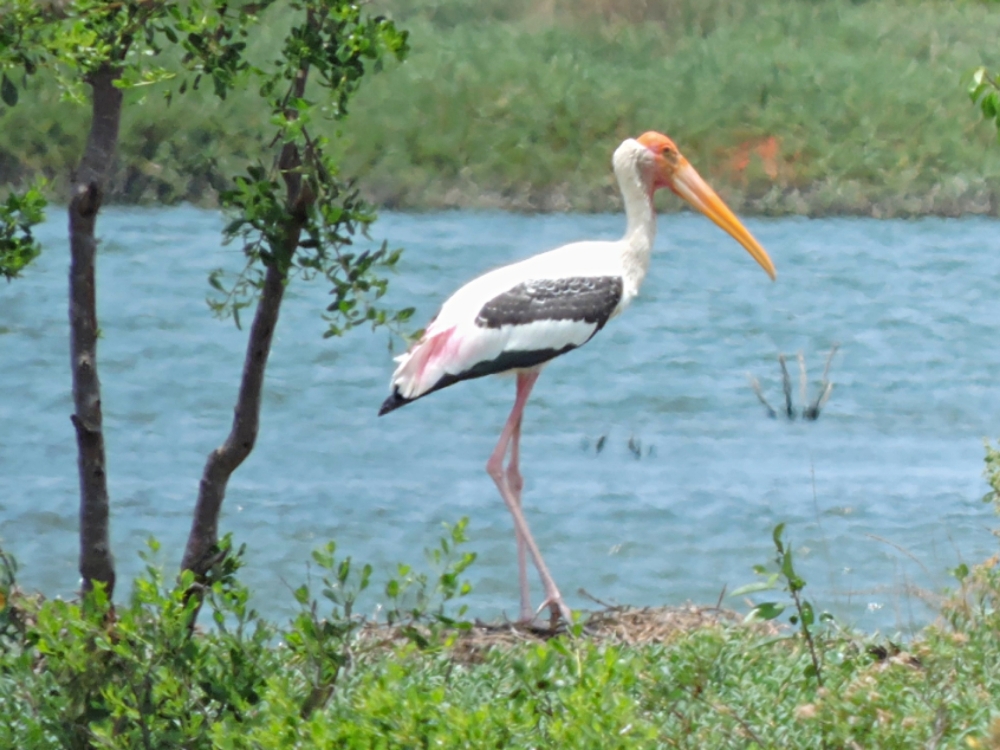
I was especially pleased to then add Spot-Billed Pelican because, with that observation, I have now seen all eight of Earth’s pelican species. Considering how geographically disperse they are, I am rather pleased with that accomplishment.
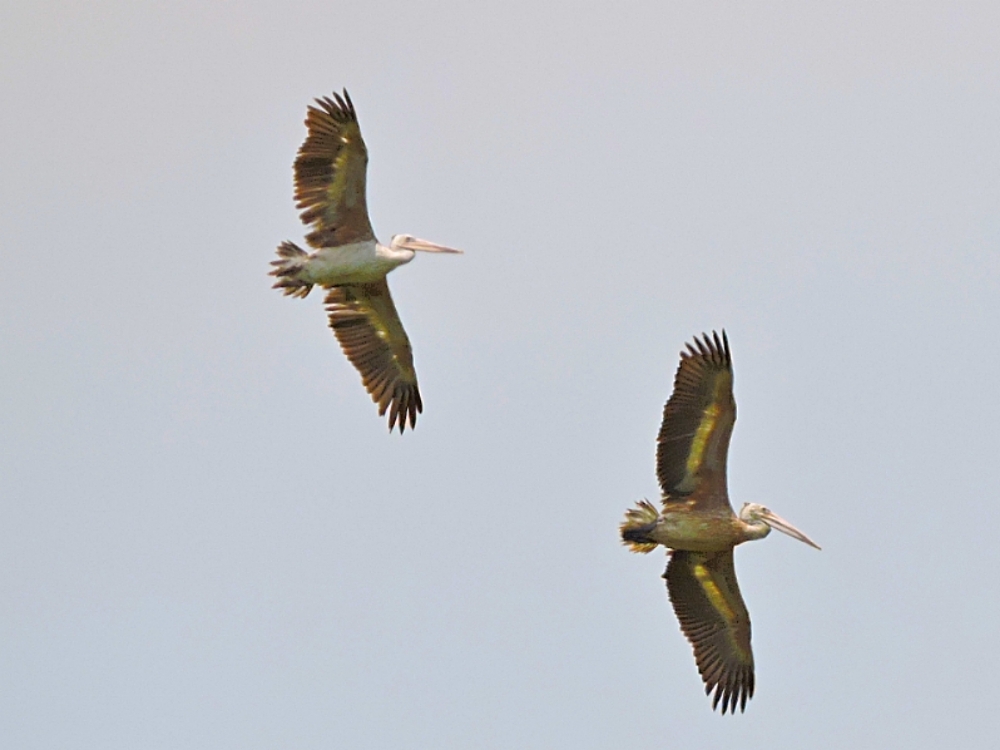
During all of my earlier visits to Asia, I constantly heard the mournful calls of Asian Koel, but never knew what birds were causing them, so I was happy to finally see one while cycling. Other birds seen while riding through that area included all three weavers of Thailand, Baya Weaver, Streaked Weaver, and Asian Golden Weaver, seen within a couple of hours of each other, Lesser Whistling-Duck, Plain Prinia, Indochinese Bushlark, Indochinese Roller, and Vinous-Breasted Starling.
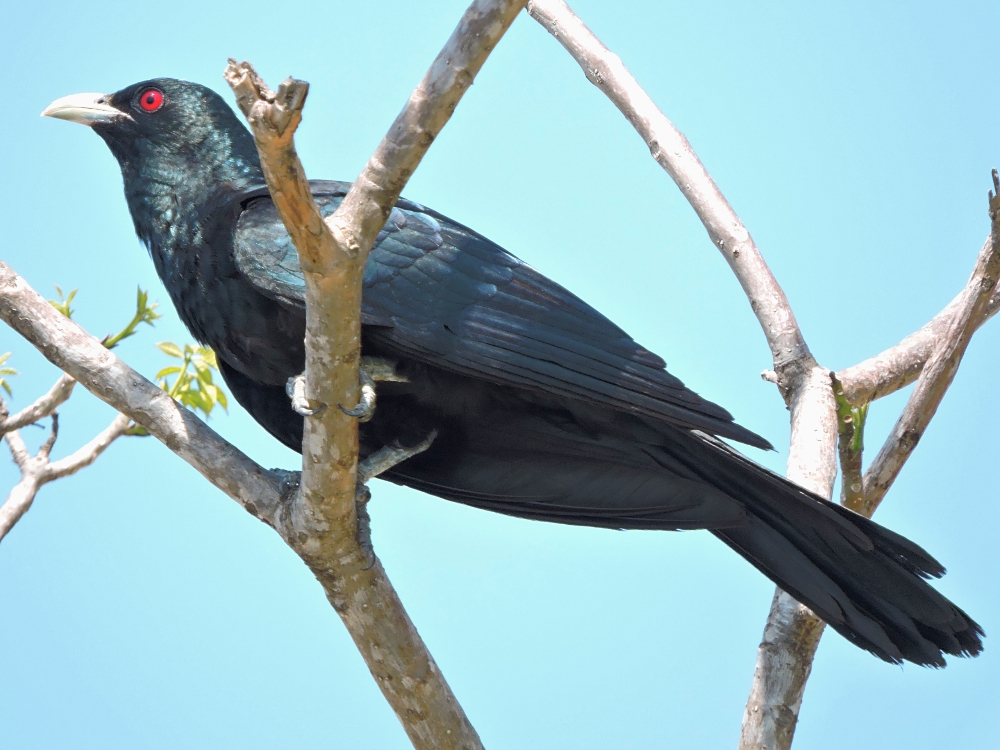
One day I was looking for a breeding colony of bee-eaters that was said to be located at an old rock quarry. That site is quite large and at first I went to the wrong side of the pit. Stopping to check my maps, I then glanced up and realized I was about ten meters away from this:
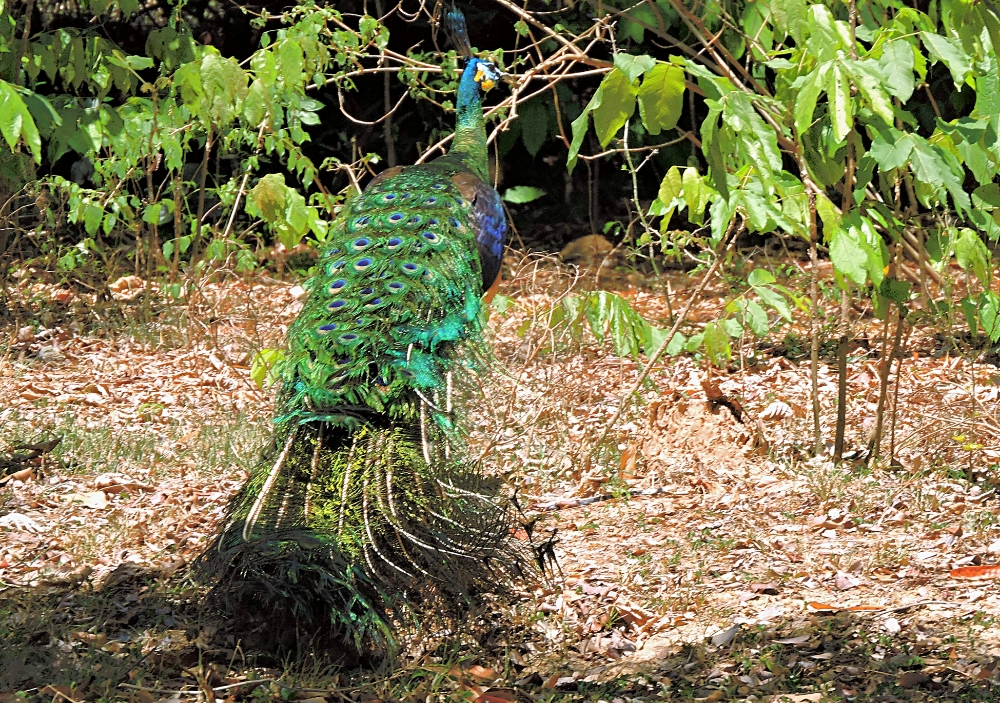
Green Peafowl is certainly an amazing accidental bird, to be sure. In the same area, while I was trying to photograph this Indian Thick-Knee, another nice new bird, Hair-Crested Drongo, flew in and perched directly above. Unfortunately, being otherwise occupied, I assumed that it was one of the more common drongos, and so I only took a few rather unimpressive photographs. Nevertheless, three great birds in the span of ten minutes made for an exceptional morning.
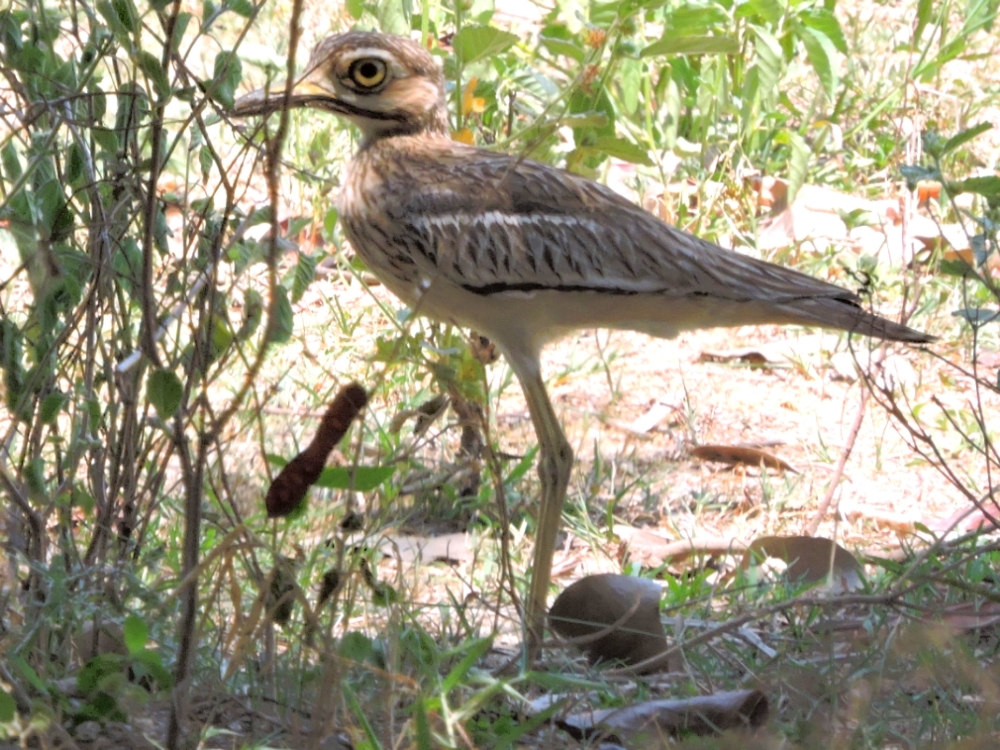
I finally did find the bee-eater colony, but only after walking down into, and across, the rocky pit. Little did I know that if I had just kept cycling I would have found an even larger colony of Blue-Tailed Bee-Eater adjacent to the road, fifty meters further on. Typical.
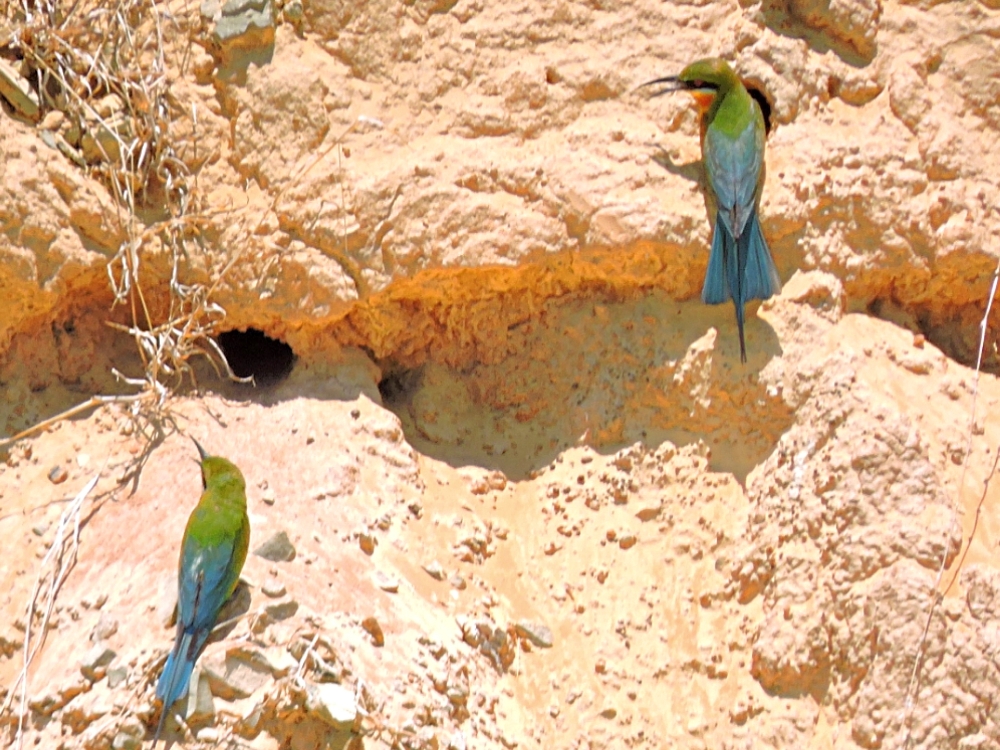
My main destination for the early part of this section was Kaeng Krachan National Park, one of Thailand’s top birding spots. I planned to stay at the well known Samarn Bird Camp, which is run by, and largely for, birders and is located just a few hundred meters from the park gate. On the moderate climb to get there things got off to a promising, if unphotographic, start when a pair of Great Hornbill flew right across my path. Unfortunately they settled in trees that prohibited photo attempts, and I am still waiting for another opportunity. Similarly, shortly thereafter, I looked up to see an individual from a family that had been eluding me for some time standing at close range, Barred Buttonquail. Before I had my camera ready, it sauntered into the taller grass along the roadside. When I slowly approached that spot, it flushed and quickly disappeared into a large field of pineapple, which I later learned is that species’ favorite habitat.
Though the park gate is close to the Bird Camp, the best birding action is around the visitor center, fifteen kilometers deeper inside. I intended to get an early start and ride there, seeing what I could find along the way. That plan was frustrated when I rolled up to the gate and was informed that bicycles were prohibited. The reason given: Elephants can be aggressive.
I have ridden around elephants several times before, without incident, but what was particularly baffling was that walking along the roads is allowed, which seemed completely illogical. Fortunately, Mr. Samarn was willing to let me hire him to shuttle me over to the area and then return later to collect me. Thankfully, I didn’t loose too much time in the process, and had a nicely productive day. Some of the new birds observed that day were Sooty-Headed Bulbul, Black-Crested Bulbul, Ochraceous Bulbul, Olive Bulbul, Gray-Headed Woodpecker, Square-Tailed Drongo-Cuckoo, Blue-Eared Barbet, Crested Goshawk, Thick-Billed Flowerpecker, Dark-Necked Tailorbird, and Bar-Winged Flycatcher-Shrike.
However, the best birds were generally easier to find because they were usually already surrounded by groups of Thai birders, who were easy to recognize thanks to the large quantities of the typical equipment they possessed. Right in the campground, it was no problem to see Common Flameback…
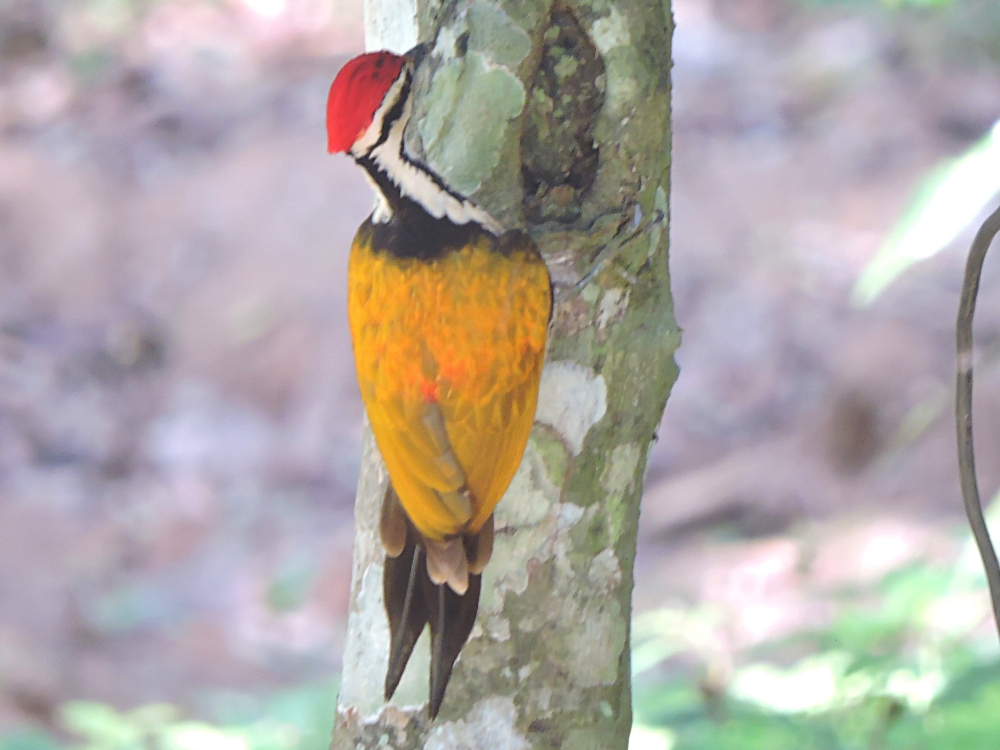
…and even more appreciated was the star of the day, from a family I have wanted to see for years, and which was nesting just meters away, Banded Broadbill!
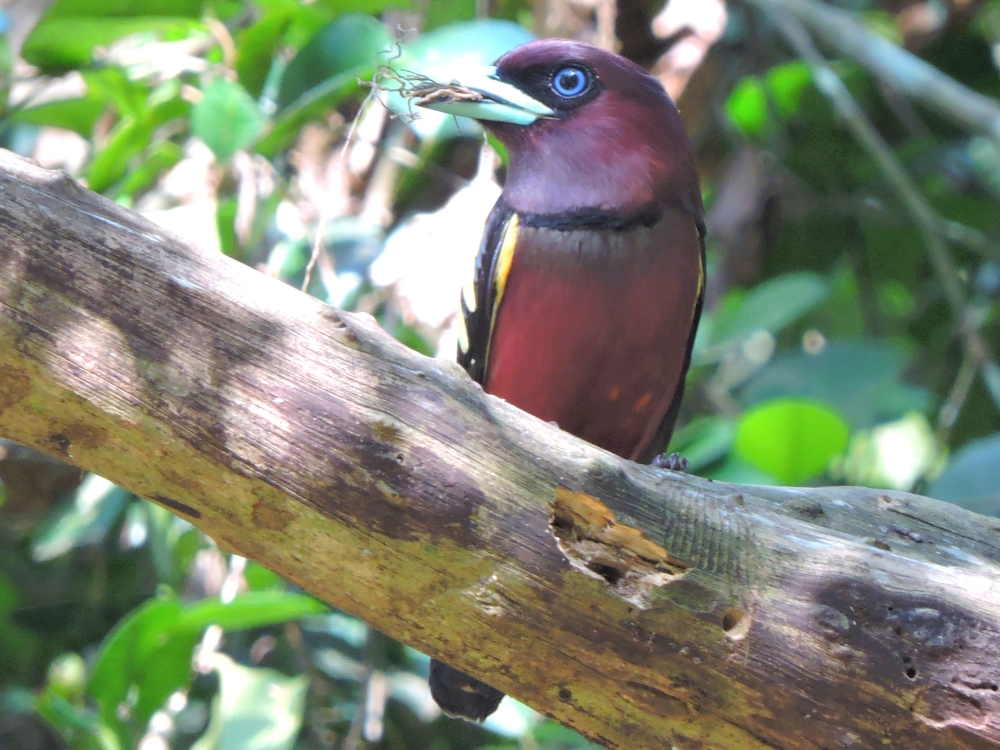
Significantly farther away, many people were watching Common Green Magpie in its nest.
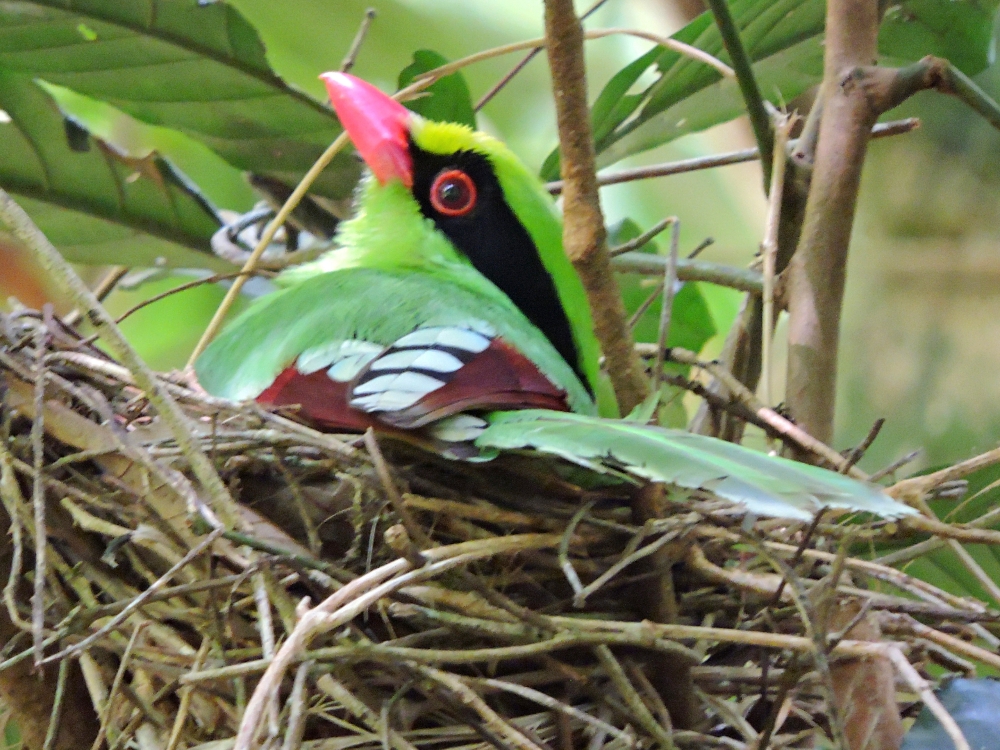
And still farther was another Broadbill, perhaps the least attractive member of that group, but very satisfying, nonetheless, Dusky Broadbill.
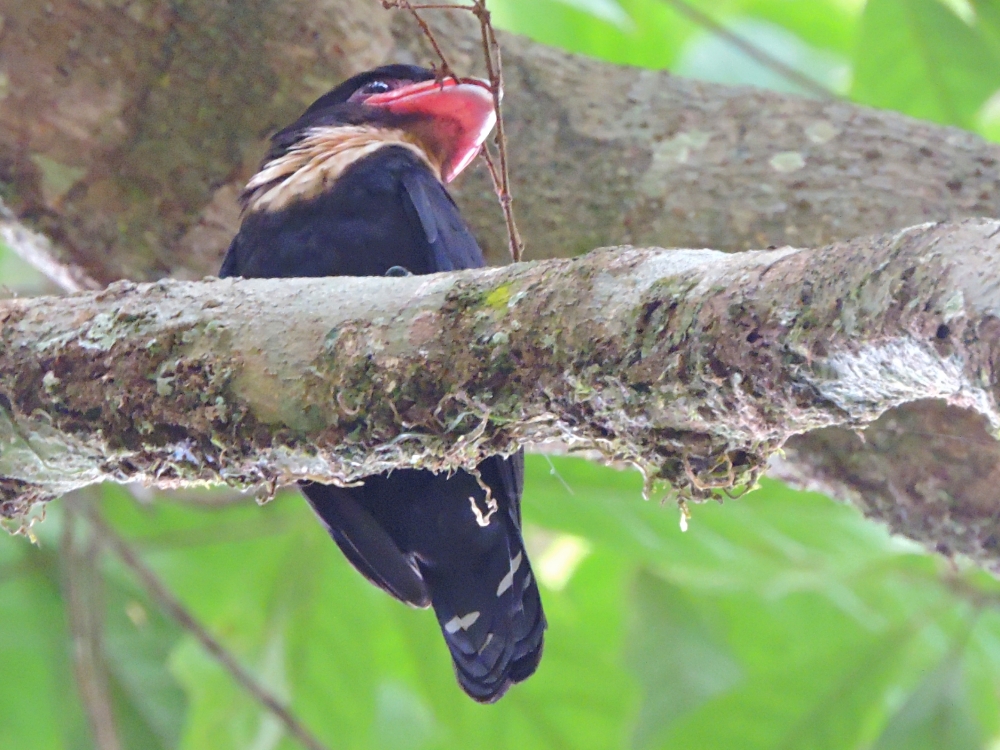
Later that day, on the way out of the Park, Samarn was gracious enough to point out Asian Barred Owlet, which made me happy, because I always need more owls.
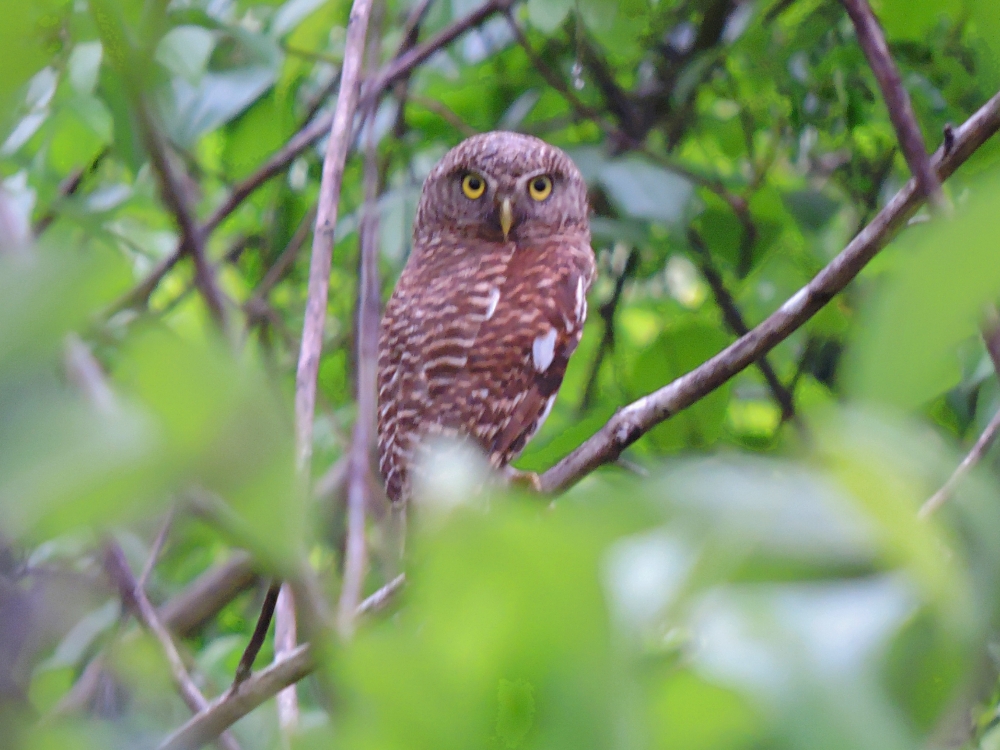
There are also several photographic hides positioned in the forest just outside the park, and utilizing one of them was my plan for the following day. Such activities can be slightly tedious and not particularly comfortable at times, but the birds did show, so it was certainly worth it. In addition to a few species already seen, the new birds included Black-Naped Monarch, Siberian Blue Robin, and Scaly-Breasted Partridge, which I watched slowly work its way through the forest and right up to the blind.
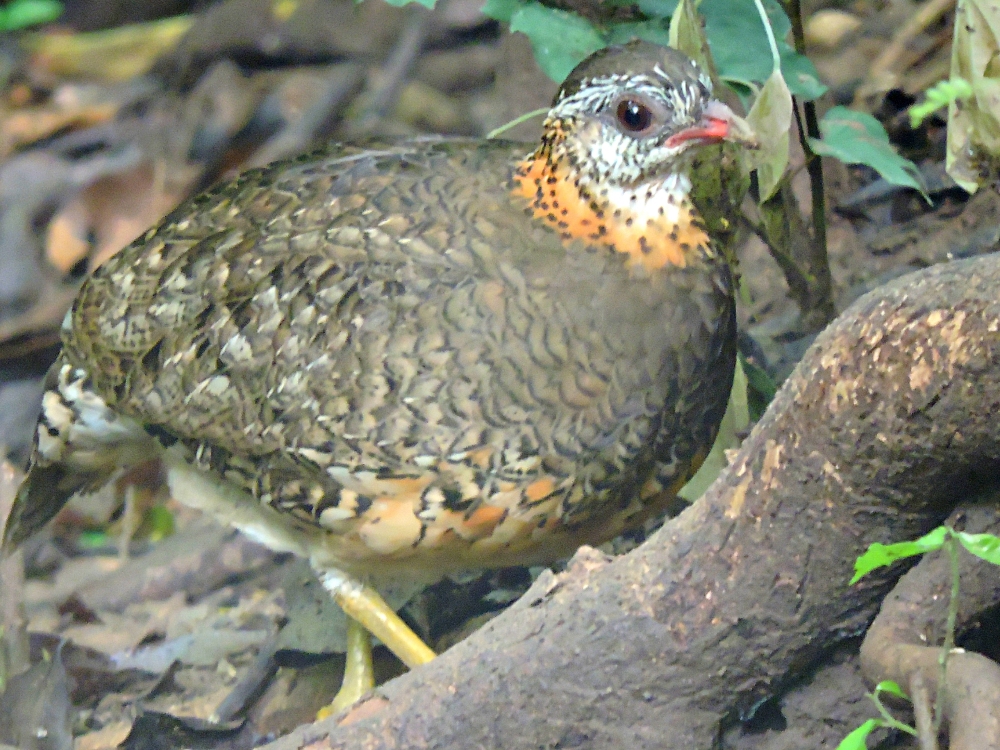
The final arrivals were a group of White-Browed Scimitar-Babbler, which appeared right as I was thinking about leaving.
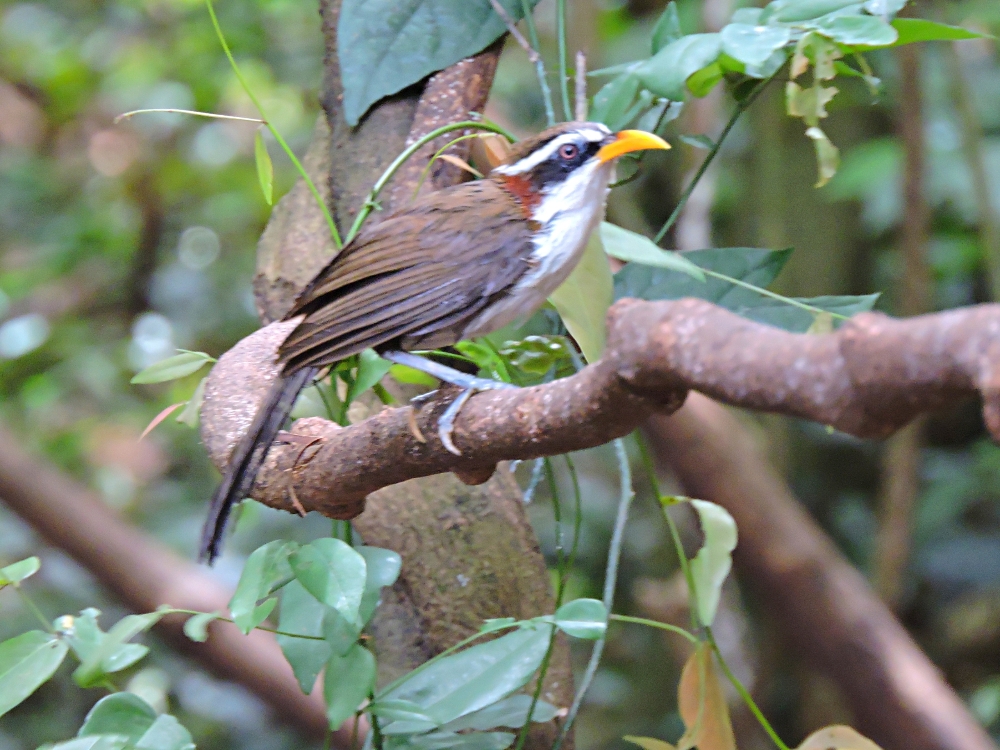
However, the best bird that day was also from a new family for me, Hooded Pitta, and this individual was gracious enough to keep me entertained by making repeated appearances throughout the day.
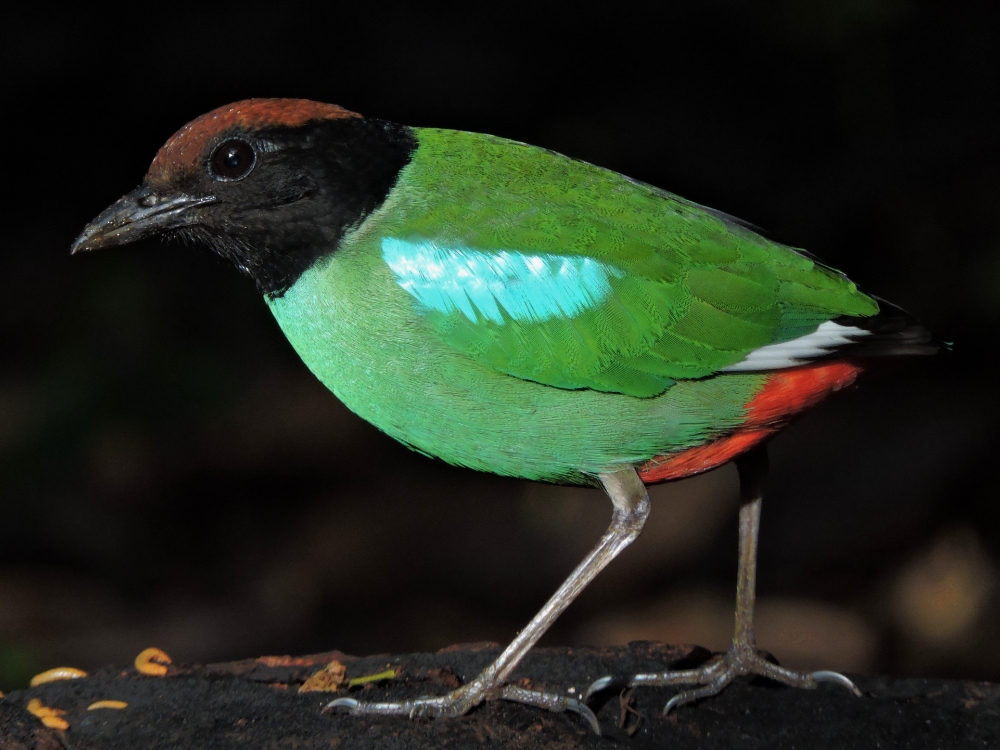
I felt that this was a great start to my time in Thailand, compensating nicely for my earlier deficiencies. I still have a considerable length of time left to go in the country, but with the local travel policies changing frequently, I have already had to revise my remaining route, and eliminate some promising destinations. There will certainly be more birds to come, but I can’t yet predict which they will be, nor where I will see them.